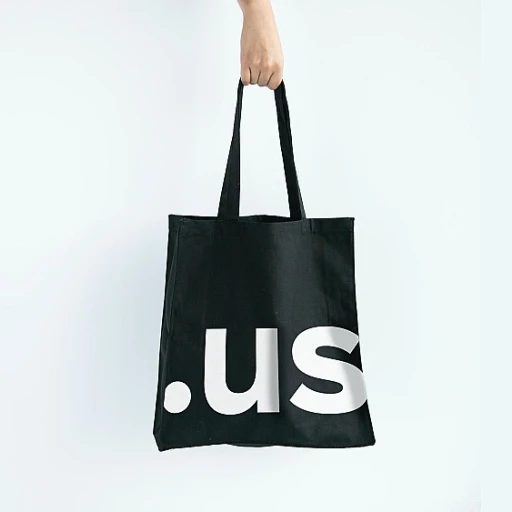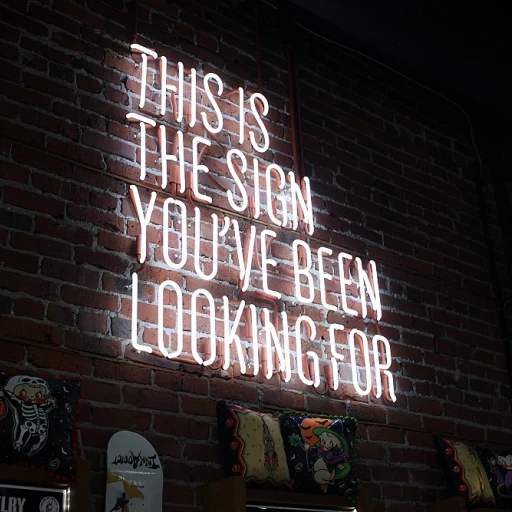
Understanding the Unique Risks in the Luxury Sector
Identifying Distinctive Challenges in the Lux Sector
The luxury sector is indeed distinct, characterized by unique challenges that demand specialized risk management strategies. Luxury brands often contend with risks that differ significantly from those faced by companies in other sectors. Such risks can impact brand reputation, often considered the lifeblood of a luxury brand. The importance of ensuring luxe quality in all aspects of a company's operations cannot be overstated. Luxury businesses must navigate a complex landscape of intellectual property risks, cybersecurity threats, and supply chain vulnerabilities. With the increasing reliance on data and software, quality assurance becomes an essential component in mitigating these risks. Testing and quality control are vital to safeguarding the exclusivity and integrity that define luxury. Economic volatility presents another dimension of challenges. Stock market fluctuations, geopolitical events, and shifts in consumer behavior—all require real-time risk monitoring and management. Captive insurance programs are frequently deployed as a strategic tool to manage such risks in-house, providing brands with tailored insurance solutions and peace of mind. Moreover, sustainability concerns are increasingly becoming integral to risk management strategies. Luxury brands are under pressure to uphold sustainability without compromising on quality, enhancing risk complexity. According to a management trend that embraces transformation, adapting to such changes demands robust and dynamic approaches. As we explore deeper into effective luxe risk management systems and the technological innovations driving these systems, it becomes clear that the luxury sector's challenges require innovative solutions and forward-thinking strategies to maintain and enhance brand prestige over the long term. Understanding these risks is essential for those pursuing careers in luxe risk management or seeking to bolster their business's resilience against inevitable challenges. This understanding lays the groundwork for effective risk management strategies that safeguard not just assets but also the reputation and unique value proposition of luxury brands.Key Components of Effective Luxe Risk Management Systems
Building Blocks of Luxe Risk Management
In the luxury sector, risk management is not just about safeguarding assets; it's about preserving the brand's essence and ensuring long-term sustainability. Effective luxe risk management systems are built on several key components that work together to provide comprehensive protection and peace of mind.
Comprehensive Risk Assessment
Understanding the unique risks faced by luxury brands is the first step. This involves a thorough risk assessment that identifies potential threats across the supply chain, from sourcing rare materials to delivering high-end products. A well-rounded assessment considers both internal and external factors, ensuring that no stone is left unturned.
Captive Insurance Programs
Many luxury brands are turning to captive insurance as a strategic tool for risk financing. Captive insurance allows companies to create their own insurance company, providing tailored coverage that aligns with their specific risk profile. This approach not only offers financial flexibility but also enhances risk management by keeping control within the organization.
Data-Driven Decision Making
Data plays a crucial role in modern risk management. By leveraging real-time data analytics, luxury brands can monitor risks as they evolve, enabling proactive decision-making. This data-driven approach helps in identifying trends and potential disruptions, allowing for timely interventions.
Quality Assurance and Testing
Maintaining luxe quality is paramount. Implementing robust quality assurance processes and test automation ensures that products meet the highest standards. Regular testing and quality checks help in mitigating risks related to product defects, thereby protecting the brand's reputation.
Third-Party Risk Management
Luxury brands often rely on third-party services for various aspects of their business. Effective risk management systems include strategies for managing third-party risks, ensuring that partners adhere to the brand's standards and values. This includes regular audits and compliance checks to maintain quality and consistency.
For more insights on how management software can aid in navigating these complexities, consider exploring navigating change with effective management software.
Technological Innovations in Risk Management
Leveraging Technological Advancements to Navigate Luxury Risks
The era of digital transformation is revolutionizing how luxe companies manage and mitigate risks. In a sector where maintaining impeccable standards is critical, integrating modern technology into risk management systems has become indispensable. Major technological innovations are being mindfully adopted to ensure luxury businesses can respond to risks in real time, thus safeguarding the peace of mind of both the company and its clientele.- Data Analytics and Risk Monitoring: The luxury sector relies heavily on the ability to process and analyze complex data sets. By using advanced data analytics, luxury brands can glean insights into potential risks and fine-tune their risk management strategies. This not only aids in identifying current threats but also predicts future trends, thus securing long-term sustainability.
- Test Automation and Quality Assurance: To uphold luxe quality, automated testing has become a backbone in software development for risk management. It ensures that systems operate flawlessly, which is essential for maintaining luxe standards and preventing any software glitches that could jeopardize business integrity.
- Risk Financing through Captive Insurance: Developing in-house insurance programs, such as captive insurance, enables luxury companies to better control their risks. This approach allows businesses to efficiently manage the associated costs and enhance their risk financing capabilities.
- Third Party Risk Management Services: Collaborating with external partners helps manage and mitigate supply chain risks efficiently. These service providers offer specialized risk management solutions, thus enabling luxury brands to focus on their core business while ensuring their supply chain remains robust.
- Utilizing AI for Enhanced Risk Management: Artificial Intelligence (AI) plays a pivotal role in advancing risk management with its predictive capabilities. AI can automatically adjust risk parameters, ensuring high-speed and precise updates, which is crucial for maintaining a comprehensive risk management register.
Case Studies: Successful Risk Management in Luxury Brands
Real-World Applications of Luxe Risk Management
In the luxury sector, effective risk management is not just about safeguarding assets; it's about preserving brand prestige and customer trust. Let's delve into some real-world examples where luxury brands have successfully navigated risks, ensuring their continued excellence and market leadership.
Innovative Risk Financing Strategies
One prominent luxury brand implemented a comprehensive captive insurance program to manage its diverse risk portfolio. This approach allowed the company to tailor its insurance coverage to specific needs, offering greater flexibility and cost efficiency. By utilizing captive insurance, the brand could better manage employee benefits and other third-party risks, ensuring peace of mind for stakeholders.
Leveraging Technology for Real-Time Risk Monitoring
Another luxury brand has embraced real-time data analytics to enhance its risk management capabilities. By integrating advanced software solutions, the company can monitor risks across its supply chain, enabling swift responses to potential disruptions. This proactive approach not only mitigates risks but also supports sustainability and long-term business resilience.
Quality Assurance and Test Automation
In the realm of luxe quality, a leading luxury brand has adopted test automation to ensure the highest standards in its products and services. By implementing rigorous quality assurance protocols, the brand can maintain its reputation for excellence while minimizing risks associated with product defects. This commitment to quality is a testament to the brand's dedication to delivering unmatched luxury experiences.
Building a Culture of Risk Awareness
Successful risk management in luxury brands often hinges on fostering a culture of risk awareness among employees. One luxury company has invested in comprehensive training programs to equip its workforce with the skills needed to identify and manage risks effectively. This focus on risk management education empowers employees to contribute to the brand's overall risk strategy, enhancing the company's ability to navigate challenges in a dynamic market.
Challenges in Implementing Luxe Risk Management Systems
Overcoming Hurdles in Establishing Effective Systems
In the quest to implement robust luxe risk management systems, companies frequently encounter several challenges. While understanding unique risks in the luxury sector and leveraging technological innovations is crucial, the road to successful implementation is often fraught with obstacles. Recognizing these challenges allows luxury brands to address them proactively, creating a more resilient risk management framework.- Complexity of Diverse Risks: One primary challenge is the complexity involved in monitoring diverse risks. Luxury brands must consider not only financial and operational risks but also reputational risks and sustainability concerns. This necessitates a comprehensive risk monitoring system capable of tracking changes in real time.
- Integration of Advanced Technology: While technological innovations in risk management provide immense potentials, such as test automation and fiat lux models, integrating these into existing systems can be daunting. Businesses must ensure that software development and implementation do not disrupt operations. Quality assurance is vital to ensure that the adopted technology truly supports luxury standards.
- Organizational Change and Employee Buy-In: Implementing a new risk management system often requires significant changes in business processes and jobs. Employee benefits and peace of mind can be affected as workers adapt to new systems and processes. Ensuring clear communication and providing adequate training is essential to achieve staff buy-in and minimize disruption.
- Data Management and Privacy: Handling luxury data requires careful consideration of privacy regulations and data accuracy. Companies must implement strict data management protocols to prevent breaches and maintain trust among their clientele.
- Leveraging Captive Insurance and Risk Financing: Developing a captive insurance program can be challenging yet beneficial in managing unwarranted risks and spreading the financial impact. Establishing effective risk financing mechanisms can provide long-term sustainability and support the luxury brand’s resilience.












